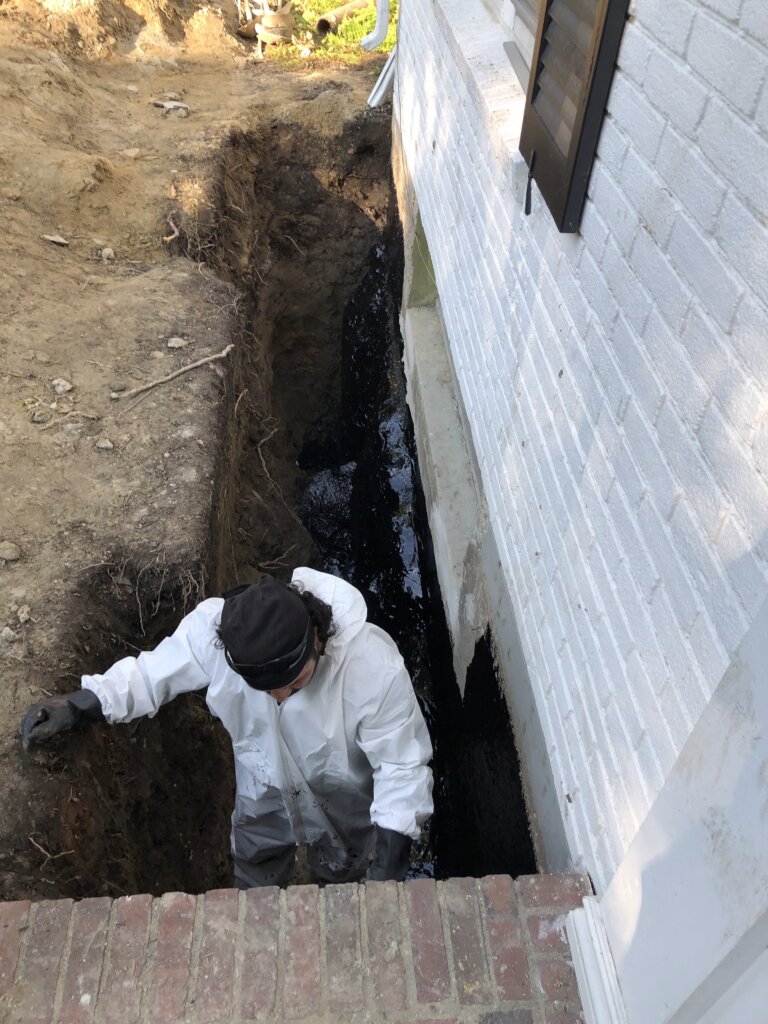
Water damage can wreak havoc on your home, particularly in the basement, where moisture can cause structural issues, mold growth, and a host of other problems.
In this guide, we will explore various basement waterproofing methods and techniques, helping you make an informed decision on the best approach for your home.
Interior Waterproofing Solutions
1. Waterproof Sealants
Waterproof sealants are an affordable and straightforward solution to minor leaks and moisture issues. These sealants are typically applied to interior walls and floors, forming a barrier that prevents water from seeping through. They are most effective when used in combination with other waterproofing methods.
2. Interior Water Drainage Systems
An interior water drainage system is designed to collect and redirect water that has made its way into your basement. This system typically consists of a sump pump, drainage channels, and a discharge pipe. When properly installed, an interior water drainage system can effectively manage water intrusion and protect your basement from flooding.
Exterior Waterproofing Solutions
3. Exterior Waterproofing Membranes
Exterior waterproofing membranes are a long-lasting and highly effective solution for keeping water out of your basement. These membranes are installed on the exterior walls of your foundation, forming a watertight barrier that prevents moisture infiltration. While this method can be more expensive and labor-intensive, it offers superior protection against water damage.
4. Exterior Drainage Systems
An exterior drainage system is designed to collect and divert water away from your foundation before it has a chance to enter your basement. This system typically includes a French drain, which is a trench filled with gravel and perforated piping that redirects water away from your home. Exterior drainage systems are an excellent way to prevent hydrostatic pressure from causing leaks and cracks in your foundation.
Combined Waterproofing Solutions
5. Crack Injection
Crack injection is a targeted method used to repair cracks in your foundation walls. This process involves injecting a high-density polyurethane or epoxy resin into the crack, effectively sealing it and preventing water infiltration. Crack injection is best used in conjunction with other waterproofing methods for optimal protection.
6. Dehumidifiers and Ventilation
Maintaining proper humidity levels and ventilation in your basement can significantly reduce moisture buildup and mold growth. Dehumidifiers help to extract excess moisture from the air, while a proper ventilation system ensures that damp air is replaced with fresh, dry air from outside.
Choosing the Right Waterproofing Method for Your Home
Selecting the best basement waterproofing method for your home will depend on a variety of factors, including the severity of your moisture issues, your budget, and your specific foundation type. It is essential to consult with a professional waterproofing contractor who can assess your situation and recommend the most effective solution for your needs.
Conclusion
In conclusion, protecting your home from water damage is crucial, and there are several basement waterproofing methods and techniques available to address this concern. By understanding the options and working with a reputable contractor, you can ensure that your basement remains dry, safe, and free from damage.
